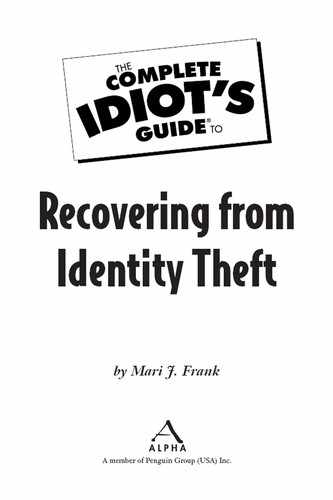Clearing the Name and Protecting the Estate
Although many of the steps are going to be similar to recovering one’s own identify, there are additional tasks to perform. Here’s the procedure to use, and the order in which you need to act:
1. Call the Social Security Administration at 1-800-772-1213 and notify them of your loved one’s passing. Follow up with a letter sent certified return receipt requested.
2. Contact the CRAs by phone to place a fraud alert on the person’s file. You will not speak to a live person. Provide the Social Security number and address and you’ll get a letter from each of the three CRAs entitling you to write them for a free credit report.
3. Determine which accounts are fraudulent by comparing them to the accounts that are genuine. Determining which is which may be a feat in itself. Look for fraudulent addresses on the report, the date the accounts were opened, the dates of inquiries, and accounts that are in arrears.
4. Get a law-enforcement identity-theft report, as explained in Chapter 2. You will need to show the death certificate and some evidence of the fraud to get the report.
5. Fill out the identity-theft victim affidavit, explicitly stating that the victim is deceased and you are acting as the representative of the victim’s estate.
6. Write the CRAs to dispute the accounts and inquiries. Include a copy of the death certificate, an affidavit, a copy of your loved one’s utility statement, evidence of your relation, and a copy of the law-enforcement report. Inform the CRAs that the person has died and that they should immediately place a “deceased alert” on the credit file and take the file offline so no other creditor can access it. Also demand that they immediately inform all third parties that have requested copies of the credit profile.
7. If you have not already done so, contact all true creditors and business relationships of the deceased. Ask them to close accounts or, if there are bank accounts or investments that are part of the estate, provide a power of attorney and other documents to manage the estate so that you may also protect those accounts and transfer funds to new account numbers with new passwords. If your late spouse was a victim, close joint accounts and transfer any money to new accounts.
8. Contact all creditors and other third parties that have either created fraudulent accounts or have requested a credit report after the person died. In each case, explain the identity theft and establish the timing of the death. Be sure to include a copy of the death certificate. This will establish that the deceased could not have been responsible for the charges on the account. If crimes were committed by the impostor after the person’s death, you will establish death as the perfect alibi.
9. Notify the Internal Revenue Service about the fraud. You will need to fill out an estate tax return for the deceased. Let the IRS know about the fraud before they notify you of underpayment if a fraudster used the deceased’s Social Security number to work or to obtain other financial benefits. See Chapter 12 for more information.
10. If the deceased was on Medicare or Medicaid or had private health insurance, or received Social Security payments or retirement income, contact the agency or insurance company and report the death to stop someone else from claiming those benefits. Look at Chapter 14 for details on handling medical identity theft and clearing records with Medicare, Medicaid, or other health carriers.

Information = Power
The IRS has instructions on how to file a return for someone who has died. Go to www.irs.gov and download Publication 559, “Survivor, Executors, and Administrators,” for details on what to do.
11. If the deceased had a professional license, contact that state’s licensing authority and inform it that the person has died, and to place an alert in the file so an impostor doesn’t use the license. Chapter 12 has details for dealing with professional licenses.
If an attorney is involved in the resolution of the estate, understand that probate is distinct from identity theft and you may need to educate the attorney about the fraud issues. If the case must go through probate, the courts must also be notified of the fraud.
If you are having trouble getting entities to allow you to be the representative to restore the estate and your loved one’s good name, your family’s estate attorney can vouch for your identity and relationship to the deceased and can write a letter on your behalf.
Contact ChoicePoint (www.choicepoint.com) to get a background check to see if the impostor committed crimes. Notify ChoicePoint of the death of your loved one, and ask that a deceased alert be added to information regarding the name of the departed.
The Least You Need to Know
♦ Get proof of your relationship to the deceased and your authority to act for his or her estate before you attempt resolution.
♦ Inform the Social Security Administration, the IRS, Medicare, Medicaid, your state’s Department of Motor Vehicles, and any other relevant government agencies, financial institutions, and other relevant entities of the death of your loved one.
♦ Contact all companies that your loved one did business with and ask them to appropriately update, transfer, or close the accounts.
♦ Contact the CRAs to inform them of the death and the fraud, and ask them to take the deceased’s profile offline.
♦ Contact all entities involved in the fraudulent activity and ask them to remove any fraudulent entry from their records and to notify third parties who obtained such records.
..................Content has been hidden....................
You can't read the all page of ebook, please click here login for view all page.
